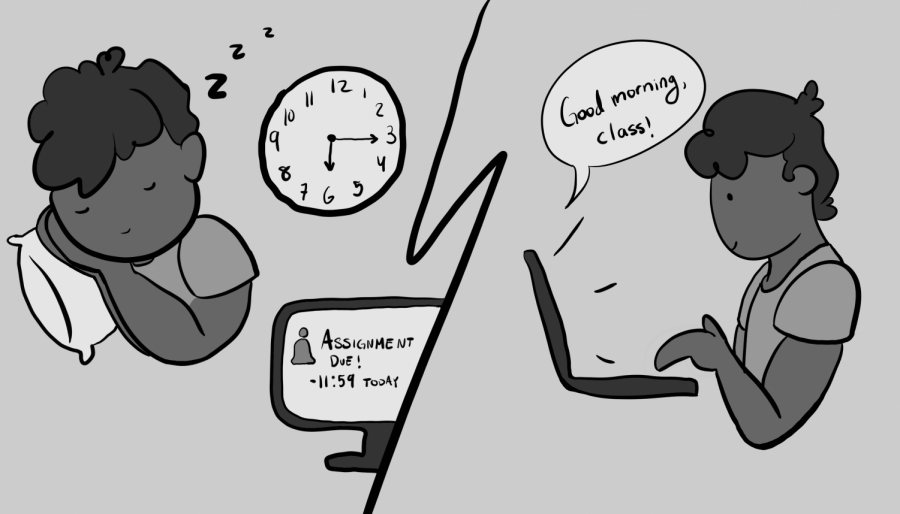OPINION EDITORIAL: Asynchronous lessons are detrimental to students’ focus and motivation
Since the transition to distance learning in March 2020, the Santa Clara Unified School District has had to make many new decisions concerning teaching students virtually, one of which is the matter of assigning synchronous or asynchronous work. As each teaching style benefits different types of learners, it can be hard for teachers to choose the right one. The synchronous learning plan, however, is ultimately better for students since it is more engaging, better enforced and more communicative.
The synchronous method is closer to how classes were taught before distance learning. Students and teachers follow a schedule and meet for the entire duration of scheduled class time. Students are taught and complete school work within the class, and they may or may not be given work to do outside of school hours.
The asynchronous method is the opposite. Students are given lectures to watch, texts to read, or self-contained assignments to complete on their own time.
Each style offers some benefits for students. The synchronous style allows for more engagement and social interaction, and keeps students motivated while working on a schedule. Additionally, they are able to ask teachers for help as they work and receive immediate feedback. On the other hand, asynchronous work enables students to work at their own pace without feeling pressured to turn in rushed work.
Synchronous does have some downsides when learning from home. While enforcing a schedule helps students stay on track, it can also cause complications in students’ home life. Following a strict schedule and joining calls at designated times can be very difficult for students who have internet issues or disruptive households. It also may be a challenge for students with jobs or other time-constraining responsibilities.
The issues of an asynchronous classroom, however, are much more common and destructive. The lack of designated time for schoolwork can easily enable students to fall behind in class, and some may find themselves with an overwhelming amount of missing assignments. This, in turn, can take a heavy toll on students’ mental health, especially if they suffer from depression, ADHD or anxiety, which can disrupt executive functioning – the ability to plan, focus and work – and motivation. It is also difficult to get help from teachers or classmates quickly since everyone is completing the assignment at their own pace.
Although it means waking up early to attend class for most students, the synchronous classroom method is far better in the long run as it provides structure and social interaction, and it provides students with more accessible help and stronger motivation.


